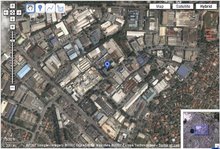
Back in 1993, when the fourth generation of the Supra was launched, a senior executive at Toyota told me that the company would probably not build a car like that Supra in future. At that time, the mood globally seemed to be that sportscars, especially those which used up a lot of fuel to achieve their high performance, were not socially desirable any longer.

It was the same with the Mercedes-Benz S-Class of the early 1990s; it was a huge and heavy limousine and the German manufacturer had been criticized for having gone ‘too far’ in engineering which seemed to disregard environmental issues that were becoming more important to buyers.
So it
 wasn’t surprising that after the 2002, Toyota didn’t come up with a fifth generation of the Supra immediately. Even the Celica was withdrawn from the US market, just as the Nissan 300ZX had earlier been retired. Partly, it had to do with the big drop in sales of such cars too.
wasn’t surprising that after the 2002, Toyota didn’t come up with a fifth generation of the Supra immediately. Even the Celica was withdrawn from the US market, just as the Nissan 300ZX had earlier been retired. Partly, it had to do with the big drop in sales of such cars too. The 4-year period when the Supra didn’t appear did not mean that Toyota engineers were not working on a sportscar. They were but it was going to be something entirely different, radically different in fact, and it would be ‘in tune with the times’.
Last month, in Detroit, the company unveiled a concept model designated the FT-HS which is widely considered to be the basis for the next Supra. Designed largely by Calty, Toyota's North American research and design centre in California, the FT-HS is described as ‘a mid-priced sportscar that integrates ecology and emotion in a concept that addresses the question "What is a suitable sports car for the 21st Century?"
"Drivers today are not satisfied with cars that are simply fast," said Kevin Hunter, Vice-president of Calty. "In addition to driving enjoyment, today's drivers are concerned about safety, ecology and social responsibility."
The FT-HS thus has a hybrid powerplant that is already in use in the Lexus GS450h, thereby providing eco-friendly benefits such as ultra-low emissions and fuel efficiency. The FT-HS appeals to an emerging buyer who grew up eco-conscious and perceives technology as a necessity, not a luxury.
The FT-HS is said to express the core values of a Toyota Brand design strategy that combine two key elements: ‘J-Factor’ and ‘Vibrant Clarity’. ‘J-Factor’ refers to the local and global acceptance of Japanese-inspired design and cultural sensibilities. ‘Vibrant Clarity’ is the design language used to express the J-factor much in the same way that L-Finesse is the language of the Lexus Division.
The exterior design was led by Calty designer, Alex Shen. From a design perspective, the theme of the FT-HS achieves sleek, taut surfaces in its exterior features, especially in the doors and bodystyle. The front and rear have been sculpted to remove mass around key functional components. Freeform geometrics define the integration of fluid surfaces contrasting hard-edge "Aero-Corners" which promote smooth airflow and reduce turbulence.
The roof has a distinctive scooped-out section designed to reduce aerodynamic drag and provide headroom at the key areas. Made from carbonfibre Kevlar, the roof retracts so that the top panel and back window pivot fluidly in a downward motion to stow in the rear seat space.
The vehicle's triangular profile has a floating "C" pillar, aero corners, a full upper-body pan, and innovative open top. The bonnet has a scalloped channel, exposing the hybrid engine.
Integrated component architecture can be seen in the aerospace-inspired lighting. The tail lamp unit spans the entire rear, and has an integrated retractable spoiler. LED clusters are located in the headlamps and the wing for energy-efficiency and decreased heat loss. Other exterior features include a speed-activated wing that elevates at high speed for additional stability and traction. The rear showcases a carbonfibre lower diffuser with integrated wide exhaust and carbonfibre wheels.
The driver-oriented exudes sleekness, technology, and performance. The lean skeletal look is achieved with exposed cross-car architecture and high-tech materials such as carbonfibre and titanium. The idea was to create a dedicated driver's cockpit which include subtractive mass expressions such as cross-car instrument panel structure and delta wing driver pod. The delta-wing driver's pod integrates many useful functions into a lightweight structural unit. All of the important functions and details are presented almost exclusively to the driver.
For example, touch-trace sensors which surround the driver and act as tactile guides for finger controls when traveling at high speeds. By eliminating the "B" pillar and creating a suspended "C" pillar, the minimalist style works in conjunction with subtractive mass. An integrated instrument panel surrounds the driver, creating an enclosed pod effect.
Armrests flow seamlessly into the door and surrounding interior. Seating is optimized for a lightweight appearance and function: the seating accommodates four and then coverts to a two-seater when the roof retracts. The passenger-seat area is open with a simple exposed airbag on the cross-car beam. A telescoping hub-less steering wheel incorporates semi-automatic paddle shifters and allows the meter to be shifted forward in order to shorten the driver's focus-time between the road and meter, and ultimately enhance driver focus.
FT-HS DIMENSIONS
Overall Length: 4325 mm
Overall Width: 1860 mm
Overall Height: 1290 mm
Wheelbase: 2650 mm
Source : MotorTrader






No comments:
Post a Comment